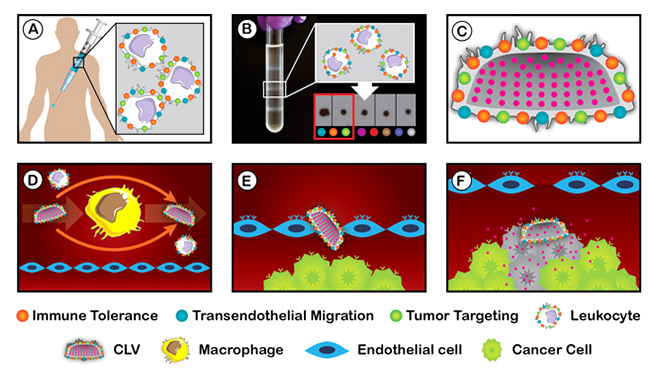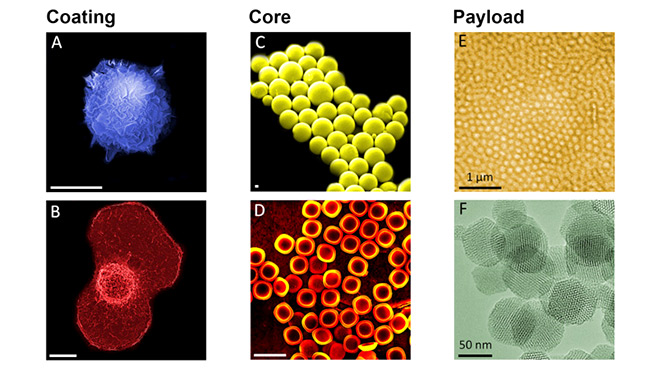Bio-Inspired Cell-Like Vectors
Bio-inspired Cell-Like Vectors for Intravenous Therapeutic Delivery
Problem: Biophysical barriers protect the body by regulating the trafficking, exchange and clearance of foreign materials. Drugs and delivery platforms are often constrained by the mononuclear phagocyte system, vessel wall and other barriers, collectively referred to as vascular barriers (VB). We have previously developed delivery platforms capable of sequentially overcoming biological barriers. The multistage delivery system was designed for optimal navigation in the blood flow, to protect cargo/payload from the direct exposure to biological barriers and to increase the delivery of theranostic agents to the endothelial target site. While multistage vectors exhibited improved biodistribution upon modifying their shape and size, avoidance of opsonizing agents and non-specific clearance continue to remain substantial hurdles for drug delivery platforms. In answer to this challenge, we developed injectable carriers that are able to penetrate and evade VB while having minimal or no impact on tissue homeostasis.
Approach: The cell-like vector (CLV) consists of a synthetic core (the “nano” component) that is amenable to payload retention and delivery. This core is decorated with a natural multifunctional coating of cellular membranes (the “bio” component) obtained from various infiltrating cell types. We aspire to use the CLV to bridge the gaps existing between traditional chemotherapy, biological and nanoparticle-based approaches. These naturally derived membranes allow synthetic cores to negotiate VB and transfer cytotoxic payloads through the tumor-associated VB. The advantages of CLV include the following:
- Coatings to endow injectable particles with cell-like functions
- Improved stability and modulation of the release of loaded payload
- Delay of phagocytic uptake by leveraging self-recognition mechanisms
- Binding inflamed endothelium and facilitating transport across the endothelial layer while eluding the lysosomal pathway
- Delayed liver clearance and increased tumor accumulation
- Retention of a therapeutic cargo and increased accumulation at target sites

Schematic of the proposed CLV: assembly and function. A) Primary leukocytes will be collected. B) Cellular membranes will be purified, and the presence of the molecular machinery necessary for immune self tolerance, for the transport across the endothelium, and for the targeting and adhesion to tumor-associated vasculature will be confirmed through molecular and biochemical methods. C) The final CLV contains all the naive membrane proteins. D) The CLV can bypass immune surveillance, E) localize at the tumor site and F) transport the payload to the tumor.
We have engineered a delivery system that is recognized by the body as “self” rather than “foreign” and simultaneously possesses the molecular machinery necessary to interact and overcome VB. Additionally, by implementing various cell sources as our coating, we are able to accomplish various benefits, tailored to meet the individual’s immediate need. This unique feature also extends to the nano- or microparticle core that enables further tunability. This approach, akin to a Trojan horse strategy, consists of a therapeutic agent loaded into a microparticle and camouflaged with white blood cell membranes. This acts as a harmless, seemingly “endogenous cell,” although it is, rightfully, a synthetic hybrid bio-nano CLV.

Images of the individual components of the CLV. The membrane of T-cells (A) or macrophages (B) can be harvested and used to coat a core of either PLGA (C) or multistage vectors (D), which can in turn be loaded with a therapeutic payload consisting of micelles (E) or nanoporous silica nanospheres (F).
